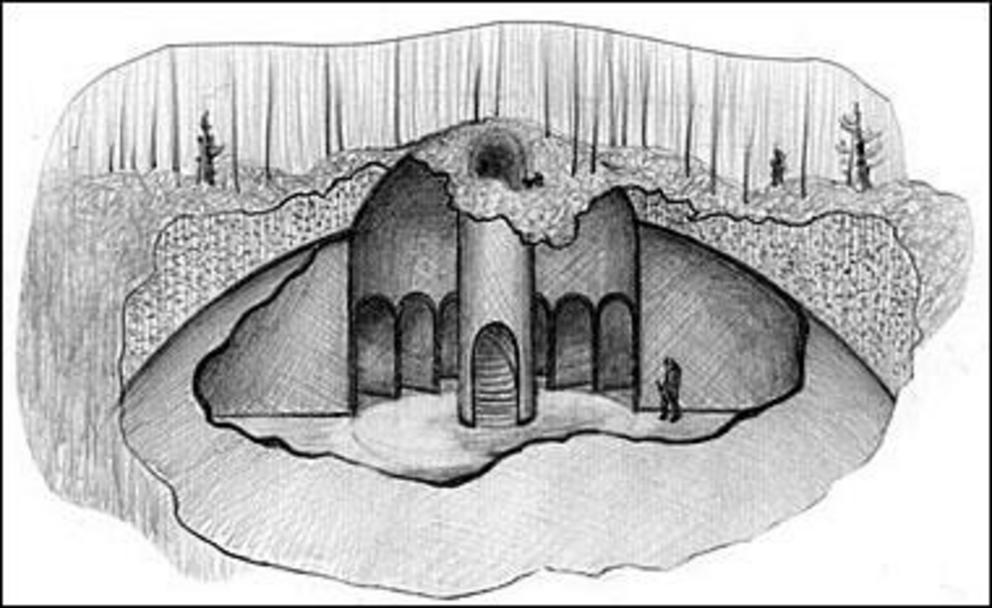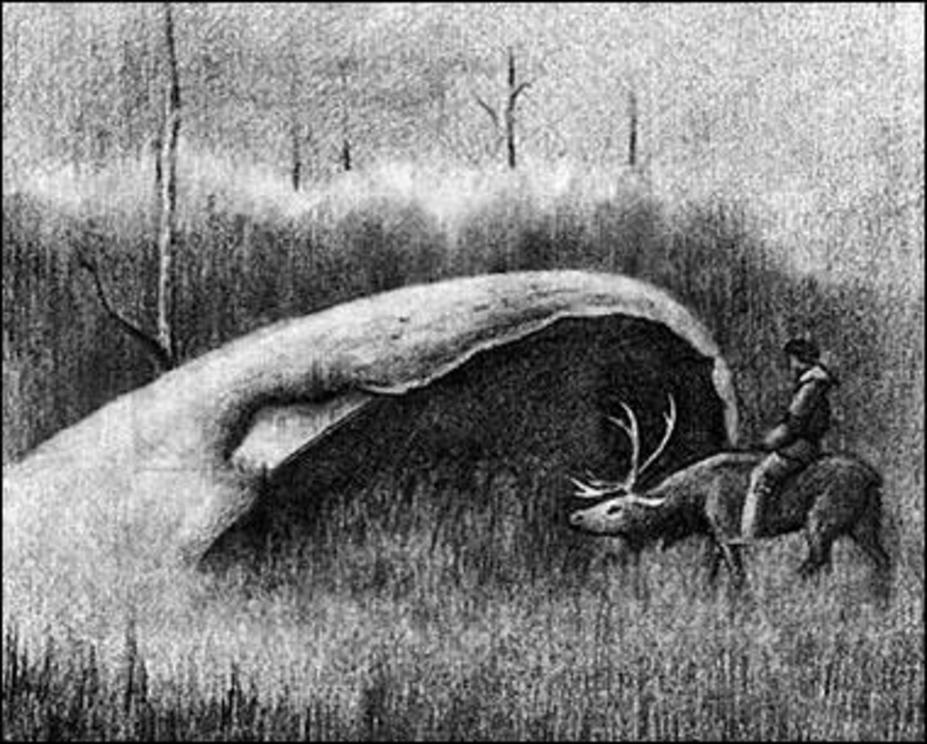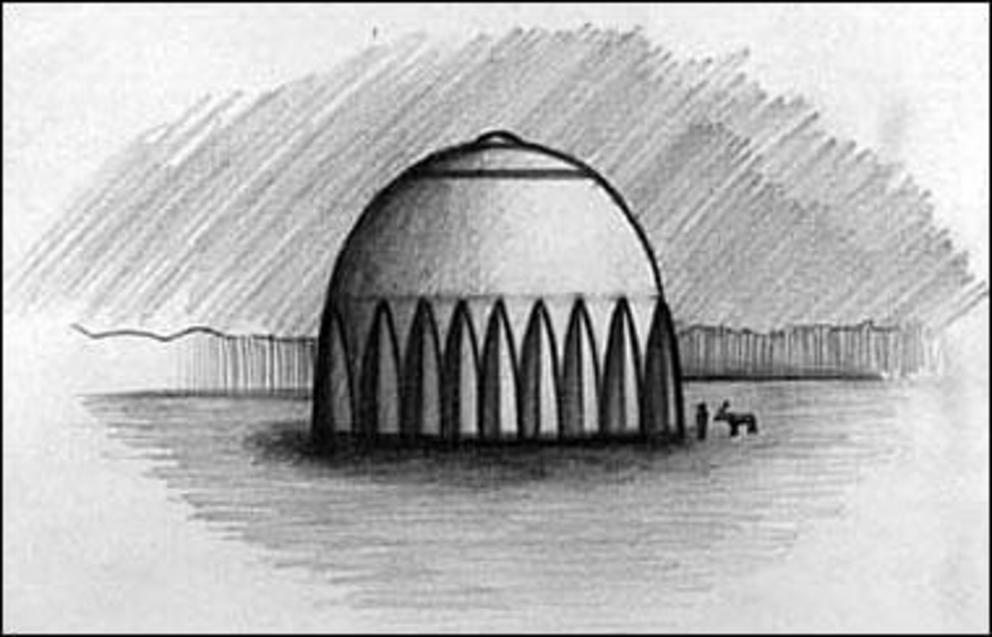Mysteries of Siberia's ‘Valley of Death’
Across a vast area of sparsely populated Yakutia in Siberia can be found strange metallic structures and evidence of devastating nuclear-type explosions every six or seven centuries. An article by Dr Valery Uvarov.
In northwestern Yakutia in Siberia, in the basin of the Upper Viliuy River, there is a hard-to-reach area that bears the marks of a tremendous cataclysm that took place some 800 years ago, which toppled the entire forest cover and scattered stone fragments over hundreds of square kilometres.
Distributed across this area are mysterious metal objects located deep underground in the permafrost. On the surface, their presence is revealed only by patches of weird vegetation. The ancient name of this area is Uliuiu Cherkechekh, which translates as "the Valley of Death".
For many years the Yakut people have given a very wide berth to this remote area that has played and still plays a special, powerful role in the fate not only of civilisation but of the planet as a whole.
After having systematised a large quantity of reports and material of various kinds, we decided to inform you of something that may change perceptions of the world around us and our place in it, if humanity can take heed of what is stated here.
In order to provide the fullest possible picture, we have divided our account into three sections. The first contains the facts and eyewitness reports in the form in which they reached us. The second presents the ancient legends of peoples living in this region and the epic poetry of neighbouring peoples who observed strange phenomena. This is important so that you can carry out your own investigation and appreciate for yourselves every detail of the narrative. Finally, we discuss what lies behind all this.
Eyewitness Reports
The area in question can be described as a solid mass of swamps, alternating with near-impassable taiga, covering more than 100,000 square kilometres. Some fairly curious rumours have become attached to the area regarding metal objects of unknown origin located across its expanse.
In order to shed light on whatever it was that, existing barely perceptibly alongside us, gave rise to these rumours, we had to go into the ancient history of this region to discover its beliefs and legends. We managed to recreate certain elements of the local palaeotoponymy and these matched in an astonishing manner the content of the ancient legends. Everything indicated that the legends and rumours were referring to quite specific things.

In ancient times, the Valley of Death was part of a nomadic route used by the Evenk people, from Bodaibo to Annybar and on to the coast of the Laptev Sea. Right up until 1936, a merchant named Savvinov traded on the route; when he gave up the business, the inhabitants gradually abandoned those places. Finally, the aged merchant and his granddaughter Zina decided to move to Siuldiukar. Somewhere in the land between two rivers that is known as Kheldyu ("iron house" in the local language), the old man led her to a small, slightly flattened reddish arch where, beyond a spiral passageway, there turned out to be a number of metal chambers in which they then spent the night. Zina's grandfather told her that even in the harshest frosts it was warm as summer in the chambers.
In days gone by, there were bold men among the local hunters who would sleep in these rooms. But then they began to fall seriously ill, and those who had spent several nights in a row there soon died. The Yakut said that the place was "very bad, marshy, and beasts do not go there". The location of all these constructions was known only to old men who had been hunters in their youth and had often visited these places. They lived a nomadic life and their knowledge of the peculiarities of the area - where one could go, and where one couldn't - was a matter of vital necessity. Their descendants have adopted a settled way of life, so this knowledge from the past has been lost.
At present, the only things that point to the existence of these constructions are ancient place names that have survived in part and all manner of rumours. But each of those toponyms represents hundreds, if not thousands, of square kilometres.

In 1936, alongside the Olguidakh ("place with a cauldron") River, a geologist directed by elderly natives came upon a smooth metal hemisphere, reddish in colour, protruding from the ground with such a sharp edge that it "cut a fingernail". Its walls were about two centimetres thick and it stuck out of the ground roughly a fifth of its diameter. It stood leaning over so that it was possible to ride under it on a reindeer. The geologist despatched a description of it to Yakutsk, the regional centre. In 1979, an archaeological expedition from Yakutsk attempted to find the hemisphere he had discovered. The team members had with them a guide who had seen the structure several times in his youth, but he said that the area was greatly changed and so they failed to find anything. It must be said that in that locality you can pass within 10 paces of something and not notice it, so earlier discoveries have been pure luck.
Back in 1853, R. Maak, a noted explorer of the region, wrote: "In Suntar [a Yakut settlement] I was told that in the upper reaches of the Viliuy there is a stream called Algy timirbit (which translates as "the large cauldron sank") flowing into the Viliuy. Close to its bank in the forest there is a gigantic cauldron made of copper. Its size is unknown as only the rim is visible above the ground, but several trees grow within it."
The same thing was recorded by N. D. Arkhipov, a researcher into the ancient cultures of Yakutia: "Among the population of the Viliuy basin there is a legend from ancient times about the existence in the upper reaches of that river of bronze cauldrons or olguis. This legend deserves attention as the areas that are the supposed location of the mythical cauldrons contain several streams with the name Olguidakh - 'Cauldron Stream'."

And here is a passage from a letter penned in 1996 by another person who visited the Valley of Death. Mikhail Koretsky from Vladivostok wrote:
"I was there three times. The first time was in 1933, when I was ten - I travelled with my father when he went there to earn some money - then in 1937, without my father. And the last time was in 1947 as part of a group of youngsters.
"The 'Valley of Death' extends along a right-hand tributary of the Viliuy River. In point of fact it is a whole chain of valleys along its flood lands. All three times I was there with a guide, a Yakut. We didn't go there because life was good, but because there, in the back of beyond, you could pan for gold without the threat that at the end of the season you'd be robbed or get a bullet in the back of your head.
"As for mysterious objects, there are probably a lot of them there, as in three seasons I saw seven of those 'cauldrons'. They all struck me as totally perplexing: for one thing, there was their size - between six and nine metres in diameter.
"Secondly, they were made of some strange metal. Everyone has written that they were made of copper, but I'm sure it isn't copper. The thing is that even a sharpened cold chisel will not mark the 'cauldrons' (we tried more than once). The metal doesn't break off and can't be hammered. On copper, a hammer would definitely have left noticeable dents. But this 'copper' is covered over with a layer of some unknown material resembling emery. Yet it's not an oxidation layer and not scale - it can't be chipped or scratched, either.
"We didn't come across shafts going down into the ground with chambers. But I did note that the vegetation around the 'cauldrons' is anomalous - totally different from what's growing around. It's more opulent: large-leaved burdock; very long withes; strange grass, one and a half or two times the height of a man. In one of the 'cauldrons', the whole group of us (six people) spent the night. We didn't sense anything bad, and we calmly left without any sort of unpleasant occurrences. Nobody fell seriously ill afterwards. Except that three months later, one of my friends lost all his hair. And on the left side of my head (the side I slept on), three small sore spots the size of match-heads appeared. I've tried to get rid of them all my life, but they're still with me today.
"None of our efforts to break off even a small piece from the strange 'cauldrons' was successful. The only thing I did manage to bring away was a stone. Not an ordinary one, though: half of a perfect sphere, six centimetres in diameter. It was black in colour and bore no visible signs of having been worked, yet was very smooth as if polished. I picked it up from the ground inside one of those cauldrons.
"I took my souvenir of Yakutia with me to the village of Samarka, Chuguyevka district, Primorsky region (the Soviet Far East), where my parents were living in 1933. I was laid up with nothing to do until my grandmother decided to build a house. We needed to put glass in the windows and there wasn't a glass-cutter in the entire village. I tried scoring it with the edge of that half of a stone sphere, and it turned out to cut with amazing ease. After that, my find was often used like a diamond by all our relatives and friends. In 1937 I gave the stone to my grandfather, but that autumn he was arrested and taken to Magadan where he lived on without trial until 1968 and then died. Now no-one knows where my stone got to."
In his letter, Koretsky stresses that in 1933 his Yakut guide told him that: ".five or ten years before, he had discovered several spherical cauldrons (they were absolutely round) that protruded high (higher than a man) out of the ground. They looked brand new. Later the hunter had seen them again, now broken and scattered." Koretsky also noted that when he visited one "cauldron" a second time, in the intervening few years it had sunk appreciably into the ground.
For the rest of this article please go to source link below.

